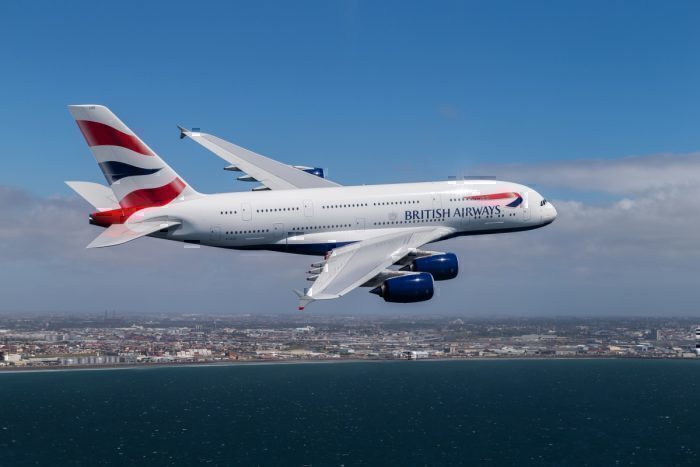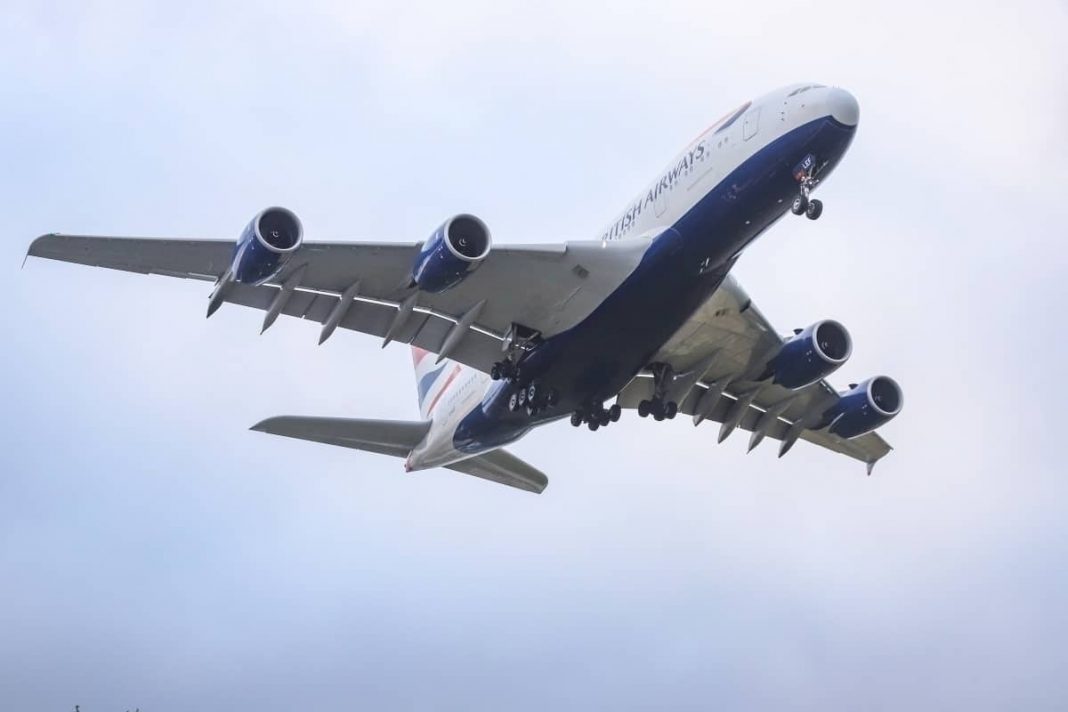Have you ever wondered if an aircraft as large as the A380 could fly inverted? It would undoubtedly be an amazing sight, but unfortunately, it is not possible. While it may be technically feasible (for a very short period, at least), there are several reasons why it can’t happen, as this article explores.

Structurally possible
Whether an aircraft such as the Airbus A380 can fly upside down is an interesting question. The first part of the answer is that it is possible from an aerodynamic and airframe perspective. There is a good discussion about this on Quora, where it is pointed out that any commercial aircraft should be built to withstand a load factor of -1.5g (1.0g being normal acceleration due to gravity). Beyond that, the airframe may fail, but stressing it to that point should be within limits.
Inverted flight is essentially normal flight at -1.0g, so from a structural point of view, it would be possible. If there was a way to execute a barrel roll into inverted flight safely, then technically inverted flight, for a short period, could occur.

But there are several limitations
In reality though, it is not going to happen. It is certainly not something that is done, even in airframe testing. The first limitation is simply executing the maneuver. All fly by wire aircraft have limits set for extremes of control. In the case of the A380, the maximum bank angle permitted is 67 degrees (according to discussion on airliners.net), and it is 33 degrees in normal flight operation. To roll the aircraft, this system would have to be overridden.
Also, there is a serious complication with the engine and fuel systems. These are designed for routine flight. The fuel supply and lubricants used in engine systems would not cope well with inversion. As discussed on Quora, pumps supplying fuel and oil are designed to work with gravity (so are located at the bottom of storage tanks), so would not wok in inverted flight.
And, as a final restriction, it is not even clear if the structure would survive the forces and maneuvers necessary to reach inverted flight. There are possible complications from the use of composite materials in construction, and whether it would remain aerodynamically stable. While the airframe should be tested to -1.5g, this does not confirm that the inversion process would work. It should survive the forces in a barrel roll maneuver, though, as this remains (if executed well) at 1.0g.

Would any airliner fly upside down?
Much of the discussion here for the A380 also applies to other airliners. It may be technically possible for a short period, but not sustained. Aircraft designed for inverted flight are built to allow this, both aerodynamically and in the design of systems, including the fuel and oil. Commercial airliners are not.
You may have seen the movie “Flight” where Denzel Washington, as the pilot of an MD-88 aircraft, inverts it to extend its flight and avert disaster. This is, of course, computer-generated. In response to inquiries about the movie, and as reported by CNN in 2013, Boeing explained:
“The MD-80 cannot sustain inverted flight. The MD-80, as with all commercial airliners, was designed to fly upright. Commercial airliners are only tested and certified for upright flight.”
But there is one case where an airliner flew inverted in real life. This was in 1955 at the International Air Transport Association meeting in Seattle and is recalled in an article in The Seattle Times. At this show, test pilot Tex Johnson put the Dash 80, the Boeing 707 prototype, into an inverted barrel roll. It worked so well, he performed a second roll!
In his book, “The Jet-Age Test pilot” (and quoted in the Seattle Times), Tex Johnson explains how such a maneuver was safe for the 707. He wrote,
“The airplane does not recognize attitude, providing a maneuver is conducted at one G. It knows only positive and negative imposed loads and variations in thrust and drag. The barrel roll is a one G maneuver and quite impressive, but the airplane never knows it’s inverted.”
What do you think about the possibilities of inverted an A380, or any other modern airliner? Let us know in the comments.
[ad_2]
Source link


